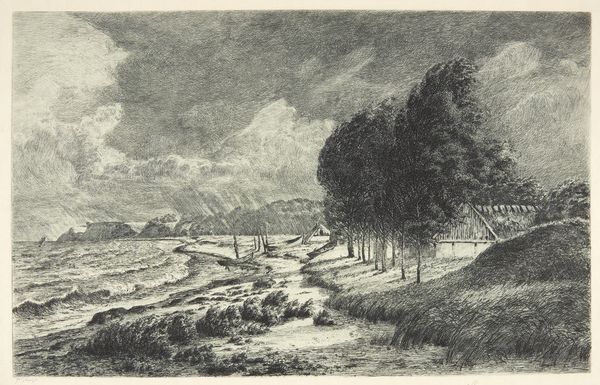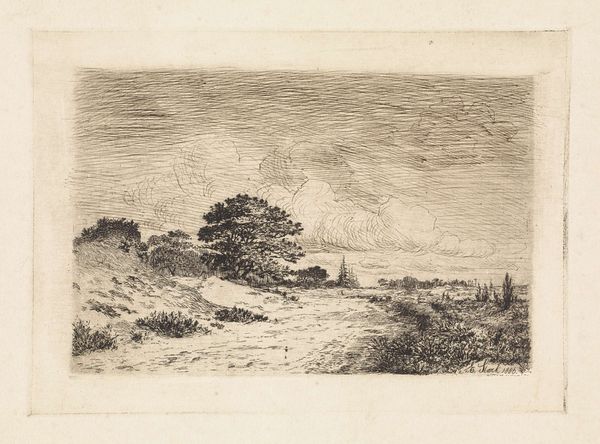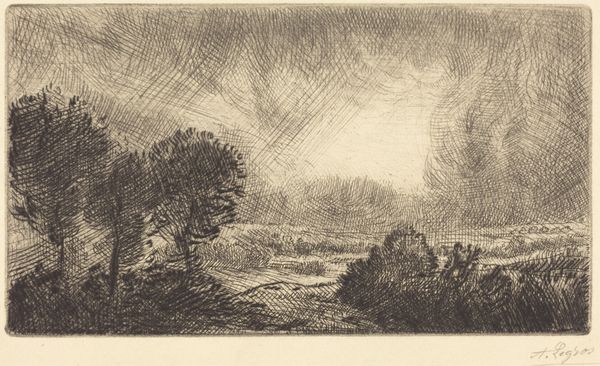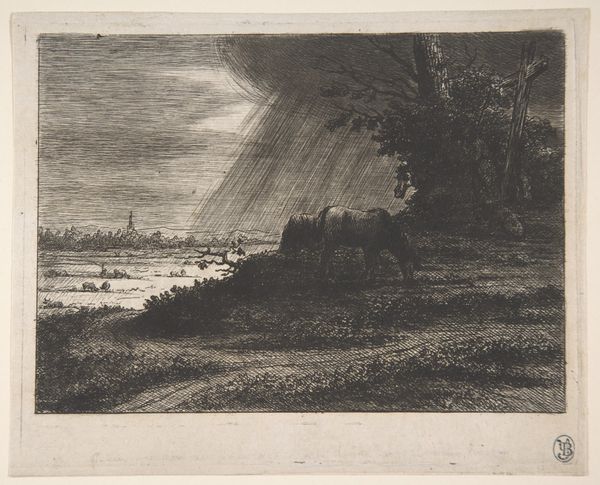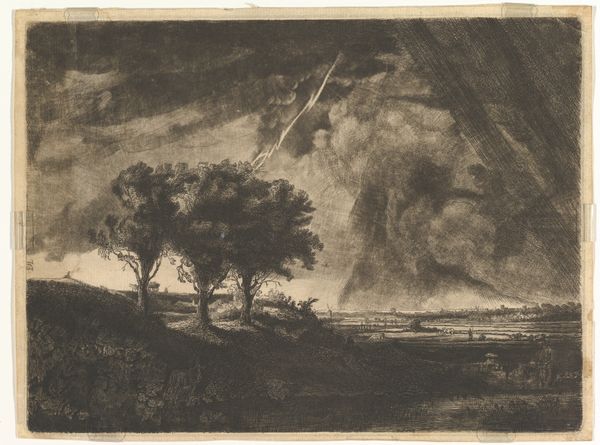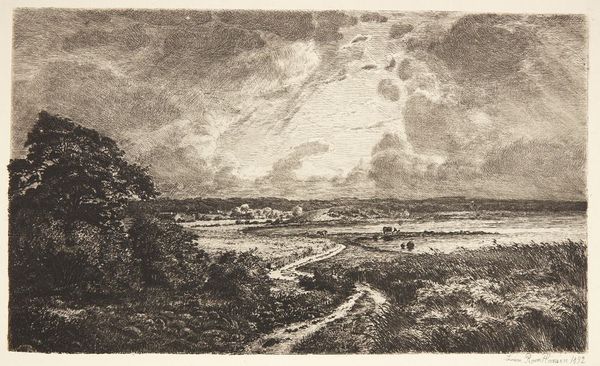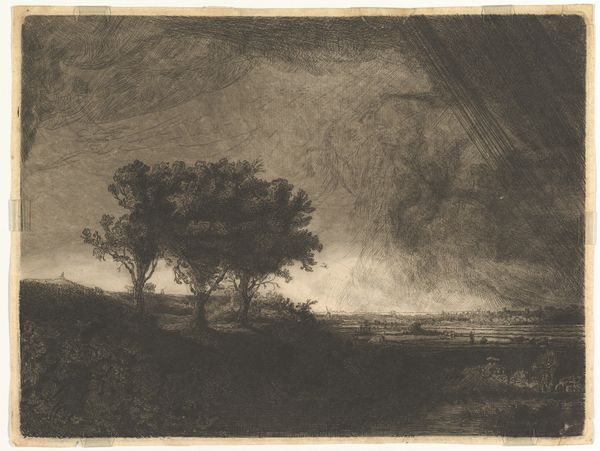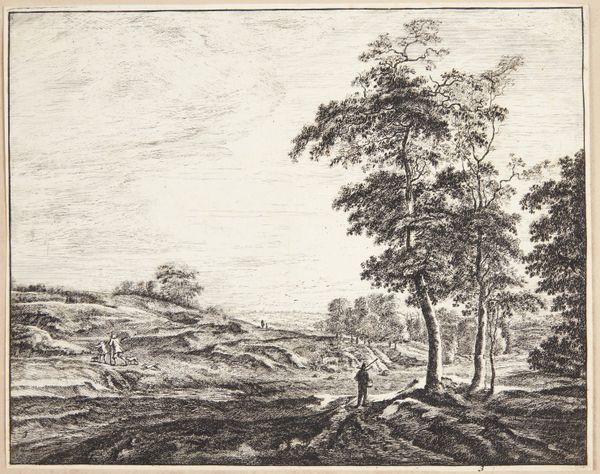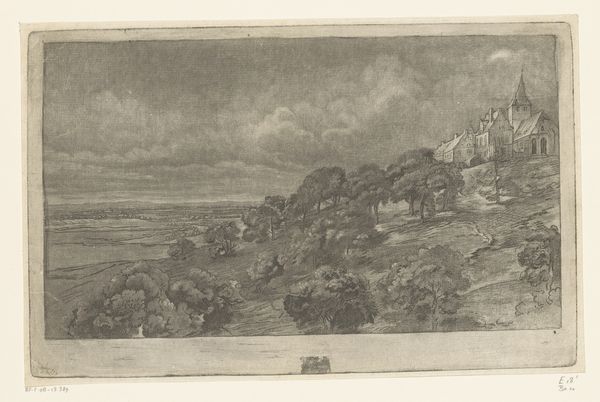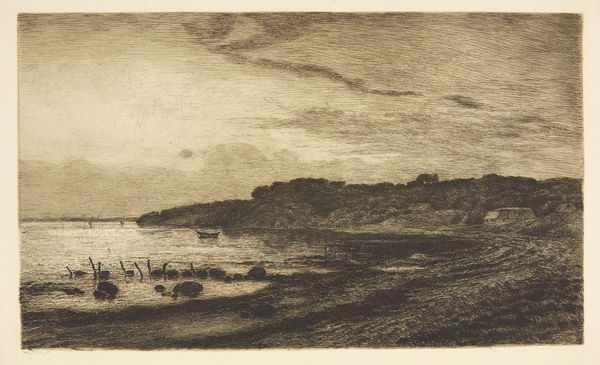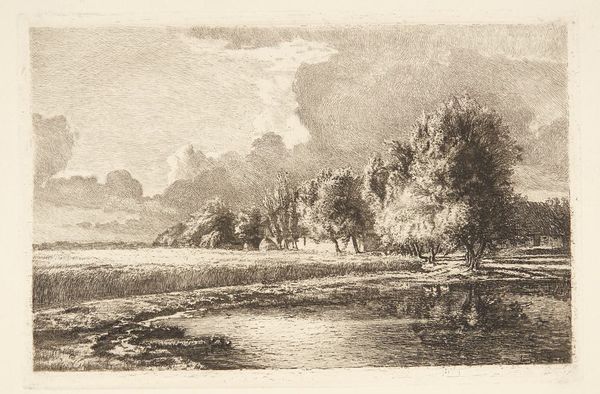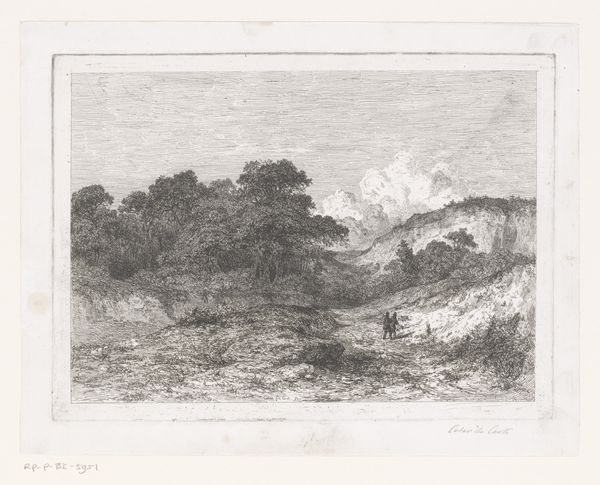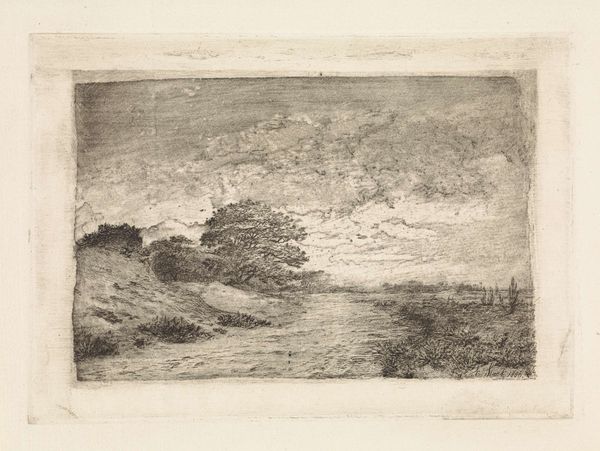
print, etching
# print
#
etching
#
landscape
#
realism
Dimensions: 237 mm (height) x 353 mm (width) (plademål)
Curator: Welcome! We are standing before "Blæst og regn", which translates to “Wind and Rain,” an etching created in 1897 by the Danish artist Louise Ravn-Hansen. Editor: My immediate impression is one of stark beauty. The high contrast and subtle gradations of tone capture a sense of raw, untamed nature. Curator: Precisely. Ravn-Hansen masterfully uses the landscape genre to engage with ideas around environmental struggle and human resilience against natural forces. Consider the context: turn-of-the-century Denmark was grappling with its identity, caught between industrialization and agrarian traditions. She presents nature not as passive backdrop, but as an active force shaping lived experiences. Editor: Absolutely. The formal qualities echo this sense of dynamic interplay. Observe how the diagonal lines of the rain contrast with the horizontal emphasis of the shore. The composition suggests a kind of visual tension, a dialogue between stability and turbulence. The varying mark-making evokes a somatic quality: coarse strokes indicating turbulence in the water vs a delicate hand rendering the vegetation in the foreground, giving one the sensation of peering closely into a dense garden space even from a distance. Curator: I am particularly drawn to the depiction of the cottage, partially obscured by trees, suggesting vulnerability and fragility, perhaps echoing a commentary on class dynamics. The encroaching weather system looms as a metaphorical threat to the domestic sphere and hints at socioeconomic precariousness faced by laborers. Editor: I find the cottage functions formally within the composition as a grounding point, creating visual tension that is nonetheless contained by the picture's edges, thus preserving visual harmony. There's a striking balance. Curator: I find it striking how Ravn-Hansen addresses issues central to both historical context and contemporary realities. The power of environmental forces affecting everyday life certainly resonates today in an increasingly erratic climate. Editor: And formally speaking, its stark tonal values make use of line and texture to show a dynamic scene of nature at its strongest. A very arresting use of simple elements. Curator: Indeed, Ravn-Hansen has invited us into a compelling interplay of social commentary and beautiful visual interpretation. Editor: I would only add that it's a lesson in visual economy, a symphony conducted with deceptively few instruments.
Comments
No comments
Be the first to comment and join the conversation on the ultimate creative platform.
